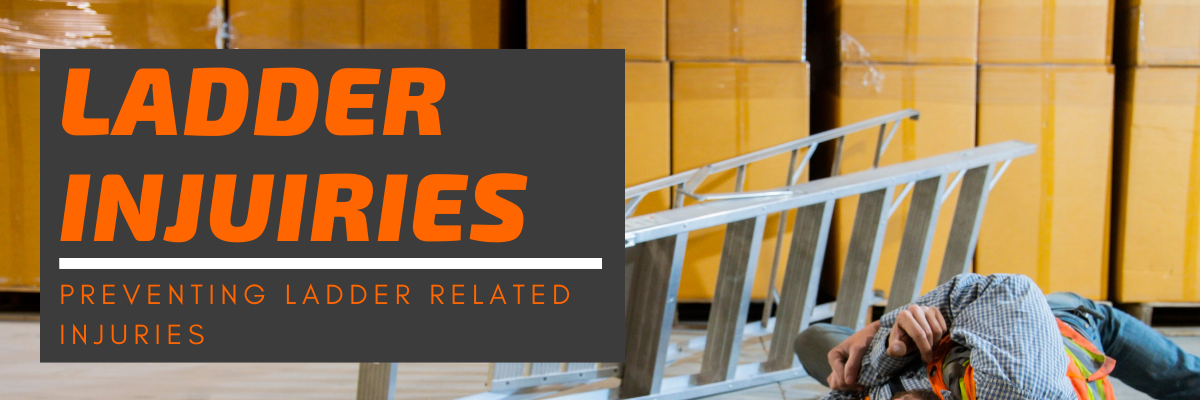Ladder accidents are extremely common, despite the fact that they are entirely avoidable. Ladder accidents can occur for a variety of reasons, but the six listed below account for the vast majority. A large number of ladder accidents could be avoided if these simple loss prevention tips for each cause are followed.
1. How to Choose the Right Ladder
When it comes to ladder safety, choosing the right tool, as with most other jobs, can make all the difference. The weight capacity of the ladder is an important factor to consider when choosing an appropriate ladder. Each ladder is intended to support a maximum weight limit; if the climber exceeds that limit, the ladder may break, causing the user to fall or become injured.
Another factor to consider when choosing the right ladder for the job is the required height of the ladder. Many injuries occur as a result of ladders being too short for a specific task, and instead of purchasing a new ladder, workers will place the ladder on something to extend its reach or stand on the top rung to gain the necessary height. Both scenarios are extremely dangerous and have the potential to result in serious injuries.
Depending on the task at hand, you should also consider the material of the ladder. If you are completing electrical tasks, a fibreglass ladder is the best material for the job. However, fibreglass is a very heavy material, so if you will be moving the ladder by yourself, an aluminium ladder may be a better choice.
2. Can I Use a Worn or Damaged Ladder?
Ladders, like most things, have a shelf life; after a few years, the stress of being climbed up and down causes ladders to fail. Damaged ladders are extremely dangerous because they can easily break and cause serious injuries when used.
To avoid being injured by damaged or broken ladders, thoroughly inspect each one before using it. If any damage is discovered, do not use the ladder until it has been safely repaired or replaced according to the manufacturer's specifications. Ensure that all ladders have appropriate safety accessories and are matched to a worker's weight, the task at hand, and the location where the user is working.
3. How to Use a Ladder?
By far the most common cause of ladder accidents is human error. A ladder should never be used for anything other than the purpose intended by the manufacturer. It is also critical not to lengthen or alter a ladder in any way.
Maintain three points of contact with the ladder at all times to ensure stability. Finally, never try to reach for something while standing on the ladder. It is far safer to climb down the ladder, move it, and then climb back up.
4. How to Position a Ladder?
When positioning a ladder, ensure that the ground beneath it is level and firm. Ladders should never be placed in front of an unlocked, blocked, or guarded door.
A good way to ensure the safety of a ladder is to always have a helper support the base while using it. If the ladder cannot be held by another person, ensure that it has an appropriate foot to prevent slipping. If you are using a ladder outside and no one is available to support the ladder's feet, the feet can be staked.
Employers, safety experts, and healthcare professionals are being urged to collaborate in order to make safe ladder use training available to people on and off the job, in addition to taking these simple preventative measures. More research into ladder-fall prevention has also been called for.
5. How much weight can a ladder hold?
Each ladder is designed to support a specific amount of weight. The total weight of the user, while wearing all clothing and carrying any additional supplies or tools, is represented by this number. The maximum weight restriction for any ladder that has received EN131 certification (which took effect on January 1, 2019) is 150 kg.
6. Ladder Standards
Additionally, every ladder is designed to withstand various levels of use. For ladders in general, this will fall under EN131 Professional and EN131 Non-Professional.
The EN131 Professional standards, which are designed for industrial and commercial applications, have replaced the outdated Class 1 standards.
EN131 None Professional should not be used on any type of workplace or if you are a trade entering people's homes. It is only covered for domestic use. This is a result of the various layers of testing that the ladders must endure.
To make sure it is secure for routine use, an EN131 Professional ladder has gone through twice as much testing.
If you have any further questions about how to use your ladder or how to choose the right ladder for you, please contact us at 01204 590 232 or use our live chat and one of our ladder experts will be happy to help.

